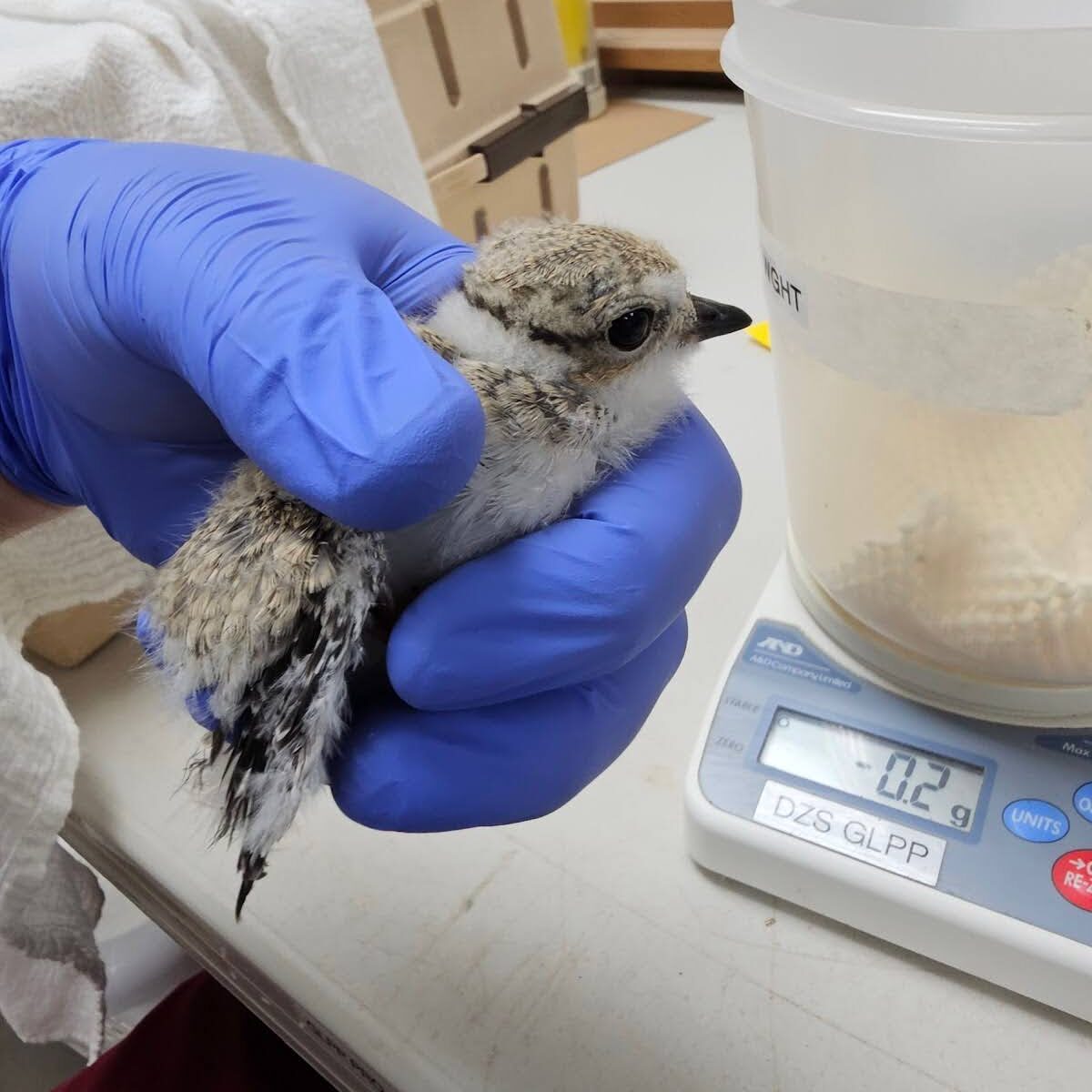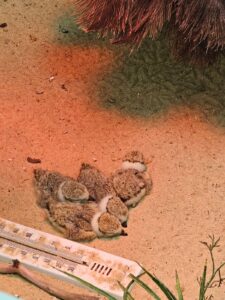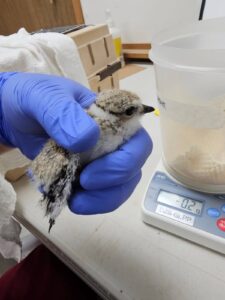Great Lakes Piping Plover

Written by: Jacob Bufka
Arriving on the grounds of the University of Michigan’s Biological Station this June brought back the memory of piping plovers, mayflies, and good ole’ humidity. This marked the second summer of rearing Piping Plover chicks. These chicks were abandoned unwillingly by their parents, which could have been from predation, human disturbance, or climate change (drastic changes in water levels flooding the nests). We give these abandoned eggs a second chance, doing our small part to help this near-threatened species.
The field team, with the help of community scientists, diligently observe the nests to make sure both parents are present, often hiking many miles to these nest sites. It’s always amazing to see such strong community investment and such admiration people have for these shorebirds. If the eggs are abandoned, the field team will pack the eggs in a travel incubator and make the journey back to the biological station. Eggs have come to the biological station in Michigan from Illinois, New York, and Canada!
With chicks at the station, our day starts at 6 AM to weigh them, clean their brooders, and to feed the chicks. It is important to monitor each chick to make sure they are healthy and consuming enough food. We also candle all eggs to assess development and to monitor weight loss. Candling is a term that we use to mean holding the eggs up to a bright light to illuminate the contents of the egg to view development. The rest of the day is determined by the age range of the chicks. The youngest chicks get fed every three hours and the older chicks are placed in the lakeside pen along with many observations. This lakeside pen is to help fine tune their survival skills, one of the many steps we take to ensure they have what it takes to be released back into the wild.
Being here for 9 days, potentially working 6 AM-9 PM, it’s always important to remember to take some time for yourself. Luckily for us it is right on the shores of Douglas Lake surrounded by thousands of acres of Michigan woodlands. It’s easy to center oneself on the shores with singing Red-eyed Vireo and American Redstart. Staying true to my bird nerd roots, I always look for new species to add to my life list. This year’s most exciting find was a Blackburnian Warbler along with finding a Least Flycatcher nest!
Having the opportunity to participate in a project that’s dedicated to increasing the numbers of this tiny and adorable shorebird has been extremely rewarding. The main reason I became a zoo keeper was to help conserve and protect wildlife. This year we had birds come back to the breeding grounds that I helped hand raise and who were released last summer. It’s amazing that these birds know to migrate to the shores of Florida in the fall and then make it all the way back to Michigan in the spring. It has been amazing to contribute to conservation efforts in a new way and to see success in one short year.
If you want to follow along with this conservation story you can follow Great Lakes Piping Plover Recovery Effort on Facebook or glpipl on Instagram. You can also learn more at www.greatlakes pipingplover.org. This captive rearing program is also spearheaded and organized by Detroit Zoo.

